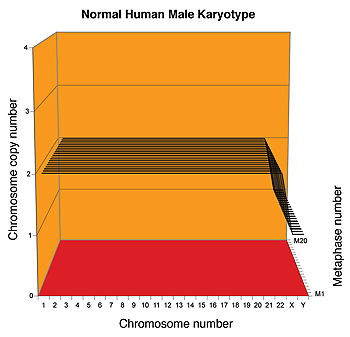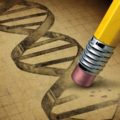
UC Berkeley molecular biologists propose that carcinogenesis – the generation of cancer – is just another form of speciation, the evolution of new species.
“Cancer is comparable to a bacterial level of complexity, but still autonomous, that is, it doesn’t depend on other cells for survival; it doesn’t follow orders like other cells in the body, and it can grow where, when and how it likes,” said Berkeley molecular biologist Peter Duesberg. “That’s what species are all about.” This novel view of cancer, documented in the journal Cell Cycle, could yield new insights into the growth and metastasis of cancer, and perhaps new approaches to therapy.
The idea that cancer formation is akin to the evolution of a new species is not new. Evolutionary biologist Julian S. Huxley wrote in 1956 that “Once the neoplastic process has crossed the threshold of autonomy, the resultant tumor can be logically regarded as a new biologic species.” And last year, Dr. Mark Vincent of the London Regional Cancer Program argued in the journal Evolution that carcinogenesis and the clonal evolution of cancer cells are speciation events in the strict Darwinian sense.
Duesberg’s arguments derive from his controversial proposal that the reigning theory of cancer – that tumors begin when a handful of mutated genes send a cell into uncontrolled growth – is wrong. He argues, instead, that carcinogenesis is initiated by a disruption of the chromosomes, which leads to duplicates, deletions, breaks and other chromosomal damage that alter the balance of tens of thousands of genes. The result is a cell with totally new traits – that is, a new phenotype.
“I think Duesberg is correct by criticizing mutation theory, which sustains a billion-dollar drug industry focused on blocking these mutations,” Vincent commented. “Yet very, very few cancers have been cured by targeted drug therapy, and even if a drug helps a patient survive six or nine more months, cancer cells often find a way around it.”
Chromosomal disruption, called aneuploidy, is known to cause disease. Down syndrome, for example, is caused by a third copy of chromosome 21, one of the 23 pairs of human chromosomes. All cancer cells are aneuploid, Duesberg said, though proponents of the mutation theory of cancer argue that this is a consequence of cancer, not the cause.
Duesberg asserts that cancers are new species because those viable enough to continue dividing develop relatively stable chromosome patterns, called karyotypes, distinct from the chromosome pattern of their human host. While all known organisms today have stable karyotypes, with all cells containing precisely two or four copies of each chromosome, cancers exhibit a more flexible and unpredictable karyotype, including not only intact chromosomes from the host, but also partial, truncated and mere stumps of chromosomes.
“If humans changed their karyotype – the number and arrangement of chromosomes – we would either die or be unable to mate, or in very rare cases become another species,” Duesberg said. “But cancer cells just divide and make more of themselves. They don’t have to worry about reproduction, which is sensitive to chromosomal balance. In fact, as long as the genes for mitosis are still intact, a cancer cell can survive with many disrupted and unbalanced chromosomes, such as those found in an aneuploid cell.”
The karyotype does change as a cancer cell divides, because the chromosomes are disrupted and thus don’t copy perfectly. But the karyotype is “only flexible within a certain margin,” Duesberg said. “Within these margins it remains stable, despite its flexibility.”

HeLa cells are a perfect example. Perhaps the most famous cancer cell line in history, HeLa cells were obtained in 1951 from a cervical cancer that eventually killed a young black woman named Henrietta Lacks. The 60-year-old cell line derived from her cancer has a relatively stable karyotype that keeps it alive through division after division.
“Once a cell has crossed that barrier of autonomy, it’s a new species,” Duesberg said. “HeLa cells have evolved in the laboratory and are now even more stable than they probably were when they first arose.”
The individualized karyotypes of cancers resemble the distinct karyotypes of different species, Duesberg notes. While biologists have not characterized the karyotypes of most species, no two species are known that have the same number and arrangement of chromosomes, including those of, for example, gorillas and humans, who share 99 percent of their genes.
Duesberg argues that his speciation theory explains cancer’s autonomy, immortality and flexible, but relatively stable, karyotype. It also explains the long latency period between initial aneuploidization and full blown cancer, because there is such a low probability of evolving an autonomous karyotype. “You start with a chromosomal mutation, that is, aneuploidy perhaps from X-rays or cigarettes or radiation, that destabilizes and eventually changes your karyotype or renders it non-viable,” he said. “The rare viable aneuploidies of cancers are, in effect, the karyotypes of new species.”
Related:
Melanoma Not Without Benefits
Scientists Explore Manipulation Of Cancer Evolution
Cancer Triggered By Viral Selection?
Compelling new evidence for prostate cancer virus








Comments are closed.